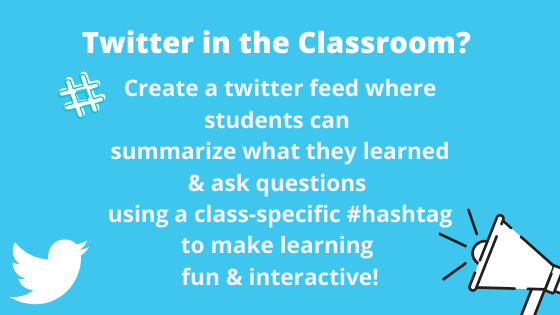The classroom looks much different from what many of us remember from our youth; computer use in school was a privilege and primarily took place in the form of Oregon Trail or keyboarding class. The mindset has changed from technology being a reward to that of a necessary, everyday learning tool. While many of us envision our younger years taking notes with a pencil in a notebook, today's students have a Google Doc for that. The previously overstuffed backpacks that weighed us down with heavy textbooks and school supplies now carry devices that have a world of information at the modern students' fingertips. Times have changed, and so must we to keep up with today's learner.
While educators have their tried and true curriculum, trying to avoid technology rather than work with it can create a chasm between the teacher and student. When educators dedicate time to professional development in learning new technologies, it promotes skill-building not only with the student but with instructors as well! Technology can create a student-centered space where pupils are more engaged and can take control over their learning, all while efficiently streamlining processes for educators in their daily tasks.
Challenges:
Technology is not static; it is continuously evolving and requires diligence by educators to stay current with new trends in instruction. Having a willingness to embrace the ever-changing landscape that is educational technology is paramount in pedagogy today. While there are valid concerns about how to ensure students use devices responsibly rather than as a distraction, teaching Digital Citizenship and the responsible use of technology will help students in class, but also to be good digital citizens in general.
Benefits:
Technology opens many doors for improving lessons and learner experiences. It provides the opportunity for timely and meaningful two-way feedback. Not only can you give feedback to your students on their work, but you can request feedback using polls and questionnaires to get student insight into lessons, helping inform and shape instruction later on.
Technology doesn't replace the educator but enhances the learning experiences and brings the subject matter to life for the pupils. These new tools have opened many doors to learners & educators, such as
- access to up-to-date reference materials
- efficient methods of data-collection
- user-friendly collaboration tools
- the ability to create and publish educational content on a variety of platforms.

Where to Start:
With the current unique situation happening, leading to school and district closures across the country, here a few fun ways to incorporate technology into your teaching even when you can't be in the classroom:
- Virtual Field Trips
- Using Videos for Mini-Lessons (You can find these on TeacherTube, or create them yourself!)
- Educational Podcasts/Have your students create a podcast on relevant subject matter
- Student Blogging/Online Journal Entries
- and even Tweets!

With so many forms of technology out there, it can be challenging to keep track of what's available and what tools to use when. Building awareness of what your school and district capabilities are is an essential step to reducing technology resistance among teachers and can be a way for them to collaborate on curriculums. Are you looking for ways to integrate tech in your teaching or round out your curriculum while distance learning? FEV Tutor has plenty of experience keeping students engaged while learning remotely and helps students close achievement-gaps no matter the circumstance!
Want To Learn how FEV Tutor can help your students while distance learning? Check out this video!
P.S. Check out our recent success story! Innovative 1:1 Math Intervention at Newton County Schools!
